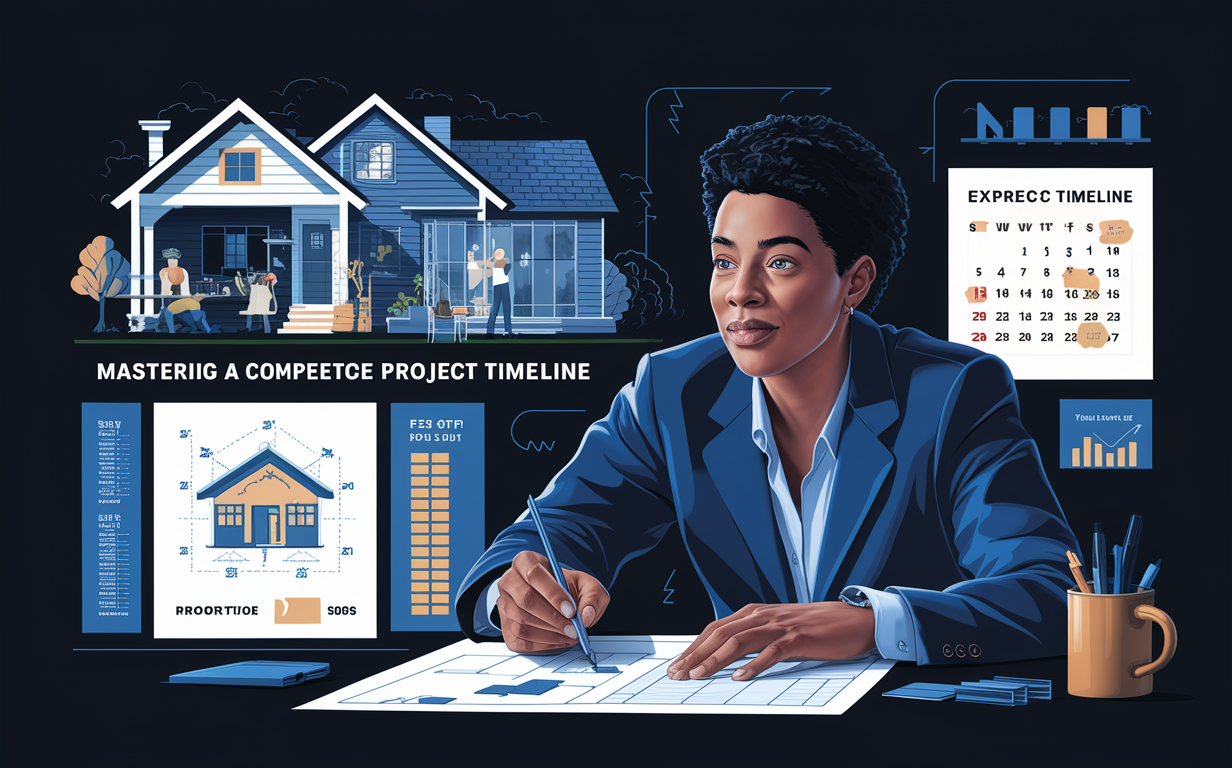
Master Developing a Comprehensive Project Timeline for Fix & Flip Investments
Master Developing a Comprehensive Project Timeline for Fix & Flip Investments
Developing a comprehensive project timeline for fix & flip investments is essential to maximizing your ROI and minimizing risks. A well-planned timeline ensures that each phase of your project is executed efficiently, helping you stay on budget and on schedule.
Key Takeaways
Project timeline is crucial for the success of fix & flip investments.
Effective planning involves pre-purchase due diligence, renovation phases, and final inspections.
Data-driven metrics and real-life experiences can provide valuable insights.
Flexibility and speed are key factors in executing a successful flip.
Creating a detailed project timeline is one of the most important steps when undertaking a fix & flip investment. It helps you manage resources, anticipate challenges, and ensure timely completion of each phase. With proper planning, you can avoid common pitfalls and make your investment as profitable as possible.
Understanding the Basics of Fix & Flip Timelines
A fix & flip project generally involves several stages, each requiring meticulous planning and execution. Let's break down these stages to understand how to create an effective timeline.
Pre-Purchase Due Diligence
Initial Property Analysis
Before purchasing a property, conduct thorough due diligence. Inspect the property, assess its structural condition, and determine the renovations needed. This step helps you estimate costs and timelines accurately.
Budget Setting
Creating a realistic budget is crucial. Factor in purchase price, renovation costs, holding costs, and contingency funds. A well-defined budget will guide your financial decisions throughout the project.
Key Activity Estimated Timeframe Property Inspection 1-2 weeks Cost Estimation 1 week Financing Arrangement 2-4 weeks
Planning and Preparation
Developing a Renovation Plan
A comprehensive renovation plan outlines the scope of work, materials needed, and labor requirements. Collaborate with contractors to create a realistic plan that aligns with your budget and timeline.
Acquiring Necessary Permits
Ensure all necessary permits are obtained before commencing any work. This step is critical to avoid legal complications and project delays.
Contractor Selection
Choose reliable contractors with a proven track record in similar projects. Vet their credentials thoroughly and make sure they understand your vision and timeline.
Planning Activity Estimated Timeframe Renovation Planning 2-4 weeks Permit Acquisition 1-3 weeks Contractor Selection 1-2 weeks
Execution Phases
Demolition and Structural Repairs
Start with demolition and any necessary structural repairs. This phase includes removing outdated fixtures, repairing the foundation, and addressing any major structural issues.
Rough-in Work
This phase involves electrical, plumbing, and HVAC installations. Ensure all rough-in work meets local building codes and regulations.
Interior and Exterior Finishes
Interior finishes include flooring, painting, and installing cabinets and countertops. Exterior finishes may involve siding, roofing, and landscaping. Each task should be scheduled to avoid overlaps and ensure efficient use of resources.
Execution Phase Estimated Timeframe Demolition and Repairs 1-2 weeks Rough-in Work 2-4 weeks Interior and Exterior Finishes 4-8 weeks
Final Stages
Inspection and Quality Control
After completing the renovations, conduct a thorough inspection to ensure all work meets quality standards. Address any issues promptly to avoid delays in listing the property.
Staging and Listing
Stage the property to highlight its best features and attract potential buyers. Work with a real estate agent to list the property at a competitive price.
Closing the Sale
Once you receive offers, negotiate the best terms and finalize the sale. A smooth closing process is the final step in a successful fix & flip project.
According to a report by RealtyBizNews, the average time it takes to complete a fix and flip project is around 180 days (6 months) from start to finish (source).
A survey by ATTOM Data Solutions found that 36% of fix and flip projects were completed in less than 6 months, while 32% took between 6 and 12 months (source).
The same survey also revealed that the average gross profit for a fix and flip project in Q3 2020 was $65,000 (source).
A study by Fixr.com found that the average cost of renovating a home is $20,000 for a minor renovation and $100,000 for a major one (source).
The same study also found that kitchen renovations take an average of 3-4 weeks to complete, while bathroom renovations take around 2-3 weeks (source).
According to a report by HomeAdvisor, the average cost to hire a general contractor to oversee a fix and flip project is around $15,000 (source).
Final Stage Activity Estimated Timeframe Final Inspection 1 week Staging and Listing 1 week Closing the Sale 2-4 weeks
Common Challenges and Solutions in Fix & Flip Projects
Unforeseen Structural Issues
Solution: Allocate a contingency fund to cover unexpected repairs.
Permit Delays
Solution: Start the permit application process early and follow up regularly.
Contractor Delays
Solution: Have a backup contractor ready and maintain clear communication.
Budget Overruns
Solution: Regularly review expenses and make necessary adjustments.
Market Fluctuations
Solution: Monitor market trends and adjust your strategy accordingly.
Lessons Learned
Thorough Planning: Detailed planning and budgeting are essential for success.
Reliable Contractors: Working with trustworthy contractors can make or break your project.
Market Timing: Understanding market conditions helps in setting a competitive listing price.
Key Takeaways
A comprehensive project timeline is essential for managing fix & flip investments effectively.
Thorough due diligence and realistic budgeting can prevent costly mistakes.
Collaboration with reliable contractors ensures smooth execution of renovation phases.
Ongoing market analysis helps in setting competitive prices and maximizing profits.
Conclusion
Developing a comprehensive project timeline for fix & flip investments involves meticulous planning, execution, and monitoring. By following the outlined steps and learning from real-life experiences, you can manage your fix & flip projects efficiently, ensuring a successful investment.
Contact PMC Money for Expert Real Estate Financing Solutions
If you need expert advice on financing your next fix & flip project, reach out to PMC Money. Our team is dedicated to offering tailored solutions that meet your unique investment needs. Visit our website PMC Money or call us at (509) 926-1755 to learn more.
By following these guidelines and taking advantage of our expertise, you can develop a comprehensive project timeline that ensures the success of your fix & flip investments.

